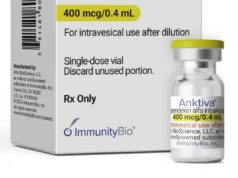
Artificial intelligence (AI) is a formidable tool for supply chain management and procurement services for healthcare systems. Just about any product can be sourced/evaluated with the highest efficiency using AI—for example, personal protective equipment (PPE), medical devices and equipment, supplies, components, contracts (including terms and costs), and even third-party vendors for particular services—all within a matter of hours.
AI is amazingly cost-effective in that it saves healthcare systems large amounts of time and billions of dollars through improved efficiencies. For example, AI can process hundreds of thousands of products or contracts in one business day or less—an achievement that would take years if it was a manual task. AI helps hospitals control costs by making their procurement processes more cost-efficient and productive, ultimately enhancing the patient experience.
A rapidly evolving science
In a complex healthcare environment with multiple transactions, implementing AI helps staff make more informed, critical decisions regarding cost savings and maximizing efficiencies. By doing so, AI reduces risks associated with human error in these more mundane functions. This drives process improvements in the form of fewer inaccuracies in claim filings, inventory management systems, patient records, and other aspects of healthcare operations.
As AI evolves toward the forefront, more people are beginning to notice its incredible potential in healthcare and its ease of use, leading to an expanding range of applications. Scalable AI tools help healthcare systems optimize their resources and tighten their supply chains by identifying inefficiencies, redundancies, and cost-saving opportunities. The end results are improved efficiencies, streamlined processes, reduced regulatory burdens, higher employee satisfaction, and time and money saved.
An AI platform provides the ability to scan millions of structured and semi-structured acquisition data to identify and categorize like items, compare pricing and availability, and confirm the most efficient path to procurement and delivery of key goods and services.
An effective AI platform utilizes image analysis, data ingestion, and analytic algorithms to review data and derive outputs within highly-specific search criteria. Key elements of an AI platform include:
-
- Natural language processing for developing predictive models for cost-avoidance by automating the analysis of vast quantities of data, finding direct comparisons, and develop recommendations for improved business models
- Deep learning algorithms with the ability to translate structured and unstructured text into usable language and data points (ideal for evaluating language in contracts)
- Custom-built fields that handle and process acquisition data from various sources and format types to create actionable insights
- Image processing and computer vision technologies for extrapolating data from PDFs, images, and other unstructured data sources
- A human-centered design approach that enables the platform to build specific features that users need to maximize their goals
Additionally, algorithm development can be customized to the client and is critical for providing automated intelligence to make well-informed decisions regarding streamlined organizational structures, workforce training, and budget forecasting.
Healthcare applications of AI
Procurement is a time-consuming, arduous process, where the overall cost and time invested is not always proportionate to the benefits. When multiple employees purchase the same or similar items at different times, from different vendors, and at different costs, it can be nearly impossible to compare purchases and identify departmental or organizational needs. This is where AI especially shines.
For example, if AI is used for procurement within federal healthcare agencies, it is important that the platform aligns with all 10 of the General Services Administration (GSA)-defined procurement categories, facilitating cross-department alignment with category management requirements.
The Covid-19 pandemic created huge disruptions to healthcare operations in 2020-2021. Healthcare leaders quickly became aware that agility was a huge asset for responding effectively to the constant supply chain and procurement challenges. Automated AI systems were essential for helping hospitals pivot their focus to serve rapidly changing needs
AI was put to work to locate and source PPE that was in drastically short supply across all industries. In one case, within a span of a few minutes AI had identified every active contract over the past five years that contained PPE and other needed medical supplies. It also enabled the ability to categorize each item by types of supplies such as thermometers, brands of sanitizer, and sizes and amounts of nitrile gloves, to mention a few. As a result, medical staff were provided access to hundreds of thousands of existing PPE and necessary medical supplies in less than a business day.
Moving forward with AI
AI makes it possible to speed through massive amounts of data—without human operators—within minutes to make more-informed decisions, reduce costs, build efficiencies, and keep healthcare organizations consistently ahead of the curve.
This easy-to-use knowledge empowers healthcare procurement professionals, subject matter experts, and customers to also create better-informed solicitations, as well as negotiate terms for new purchases more effectively. AI functionalities are also easily modified as new tools emerge and/or client requirements and the larger marketplace evolve over time.
AI has become a key part of the procurement decision support system. With AI, daily procurement activities are ultimately faster, more accurate and efficient, and less complicated—which spells unmatched benefits to healthcare organizations’ operational functions, elevates their standard of patient care, and ultimately, boosts their bottom line.
Photo: Ivan Sherstiuk, Getty Images








